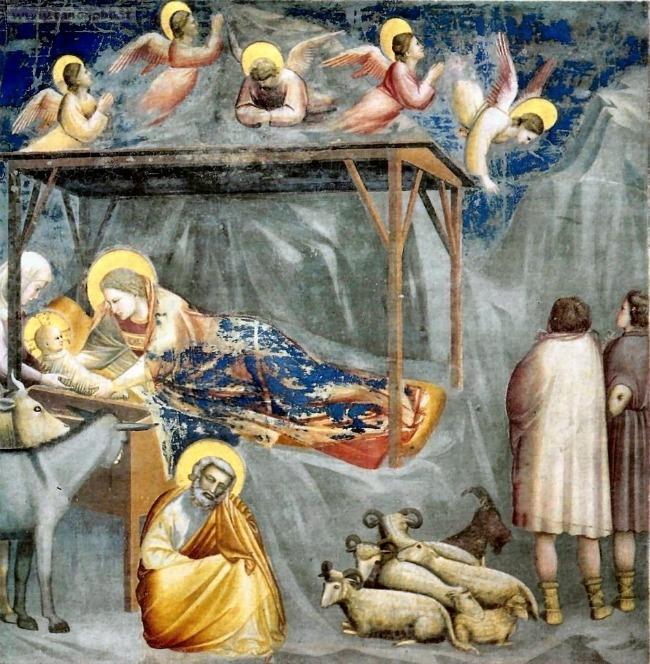This Nativity is a fresco painted by Giotto in the Scrovegni Chapel, in Padua, as part of one of his finest and most important fresco cycles dedicated to the life of the Virgin Mary.
Around 1305 Giotto executed his most influential work in the chapel commissioned by Enrico degli Scrovegni to serve as a family worship and burial space, even though his parish church was nearby; its construction caused some consternation among the clerics at the Eremitani church next door.
While we can still see strong aspects of the Byzantine fresco style, Giotto did something entirely new: his figures are not stylized or elongated, they are solidly three-dimensional, have faces and gestures that are based on close observation, and are clothed not in swirling formalized drapery, but in garments that hang naturally and have form and weight. He also took bold steps in foreshortening and with having character face inwards, with their backs towards the observer creating the illusion of space.
In this Nativity, Giotto changed the story slightly to heighten the dramatic effect. Nowhere in the Scripture is there a reference to an ox and an ass. He uses the ox to stand for the New Testament and the ass for the Old, and together they symbolize the contrast between those who see and know and those who are blind to the new light that came with Christ. As the Virgin shifts on her bed she casts a long, sad look at the Infant. We may suppose that with her power of prescience, she is gazing into the future to the time when she must give Him up to fate. Giotto views the Nativity in an entirely new light - that of intense human drama.
We still see aspects of the Byzantine style. But Giotto does something entirely new. He presents us with human beings. How tenderly this mother places her baby in the manger, as the ox and ass look on. Mother and child make eye contact. They are related, connected. They are flesh and blood. Giotto gives us not the Virgin and Child, but Mary and her baby, Jesus. Guido's figures are cold, aloof; Giotto's are warm, approachable. Fast forward through some centuries and hear the evangelical talk of a personal relationship with Jesus. Did Giotto plant the seed for that very idea? Now, there's a thought to ponder!














